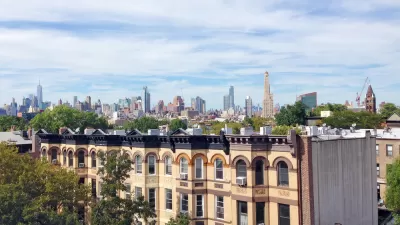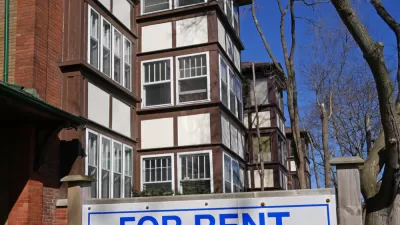Despite recent cooling in the overheated U.S. housing market, high costs and labor and supply shortages are causing continuing hardship for potential homebuyers and renters.

The housing shortage in the United States is likely to get worse before it gets better, writes Sylvan Lane in The Hill. While high interest rates have slowed inflation and cooled the housing market, high mortgage rates, supply shortages, and “a historically low inventory” mean that many potential homebuyers are being pushed into the highly competitive rental market even as builders slow construction and rents rise to historic levels. “While prices have started to fall in some of the country’s hottest local housing markets, the median home price still rose to $416,000 in June, up 13.4 percent from last year.” Meanwhile, median monthly in the United States rent hit $2,000 in May.
“The Fed is also hoping to curb the economic activity that comes with home sales and prompt homeowners to spend less money as the value of their house declines. Those factors combined should help reduce pressure on prices throughout the economy, bringing inflation down.” But higher interest rates will also prevent developers from building enough new housing units to meet demand, and a labor shortage in the construction industry is contributing to the slowing building rate. According to Lane, all of these factors will likely contribute to a continuing shortage of affordable housing.
FULL STORY: Why the US housing shortage is likely to get worse

Planetizen Federal Action Tracker
A weekly monitor of how Trump’s orders and actions are impacting planners and planning in America.

Map: Where Senate Republicans Want to Sell Your Public Lands
For public land advocates, the Senate Republicans’ proposal to sell millions of acres of public land in the West is “the biggest fight of their careers.”

Restaurant Patios Were a Pandemic Win — Why Were They so Hard to Keep?
Social distancing requirements and changes in travel patterns prompted cities to pilot new uses for street and sidewalk space. Then it got complicated.

Platform Pilsner: Vancouver Transit Agency Releases... a Beer?
TransLink will receive a portion of every sale of the four-pack.

Toronto Weighs Cheaper Transit, Parking Hikes for Major Events
Special event rates would take effect during large festivals, sports games and concerts to ‘discourage driving, manage congestion and free up space for transit.”

Berlin to Consider Car-Free Zone Larger Than Manhattan
The area bound by the 22-mile Ringbahn would still allow 12 uses of a private automobile per year per person, and several other exemptions.
Urban Design for Planners 1: Software Tools
This six-course series explores essential urban design concepts using open source software and equips planners with the tools they need to participate fully in the urban design process.
Planning for Universal Design
Learn the tools for implementing Universal Design in planning regulations.
Heyer Gruel & Associates PA
JM Goldson LLC
Custer County Colorado
City of Camden Redevelopment Agency
City of Astoria
Transportation Research & Education Center (TREC) at Portland State University
Camden Redevelopment Agency
City of Claremont
Municipality of Princeton (NJ)





























